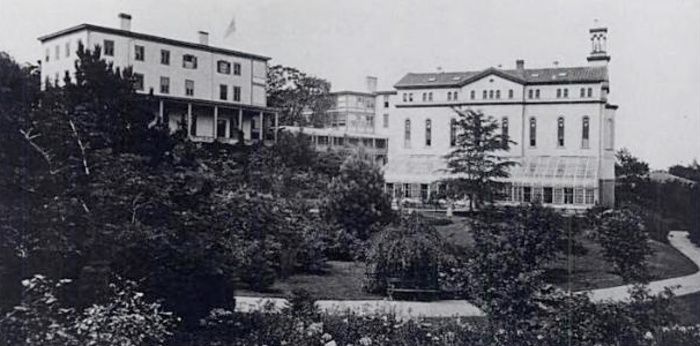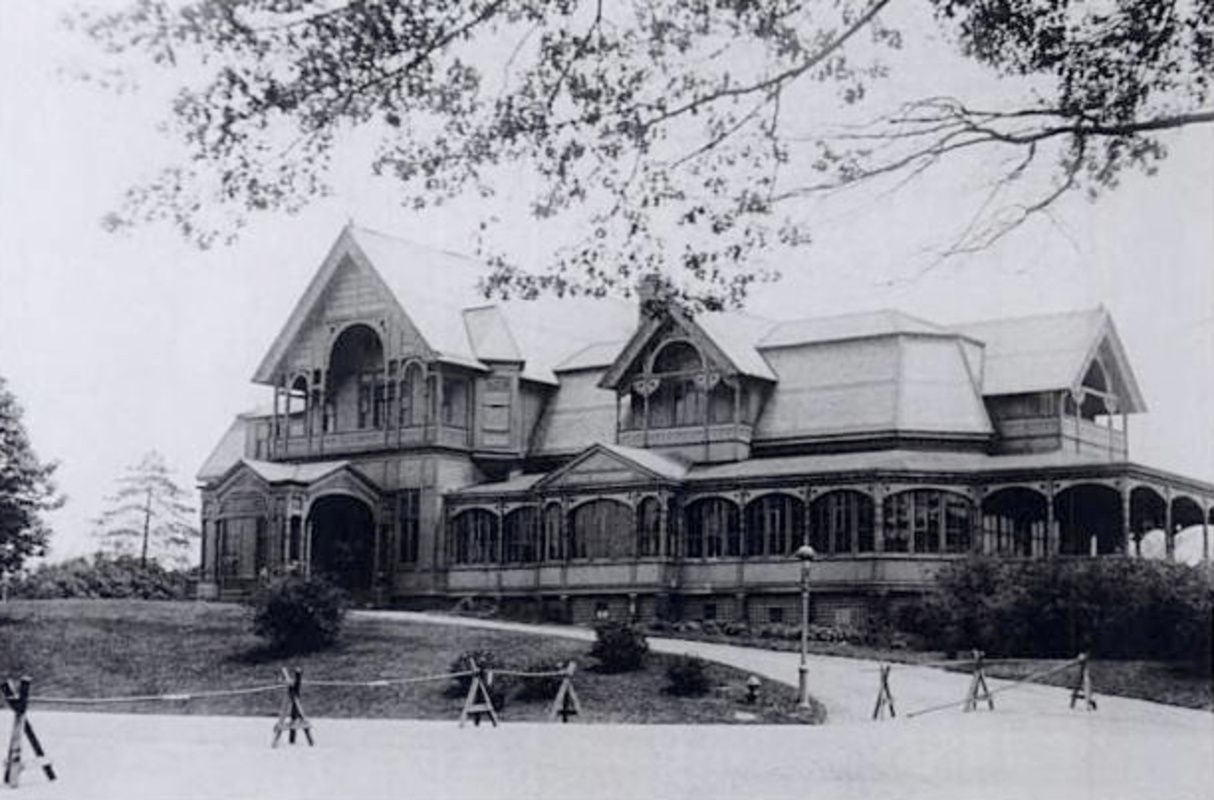Last Chance to Catch NYC's Holiday Notalgia Train
We met the voices of the NYC subway on our nostalgia ride this weekend!


One site in Central Park’s North End, known as McGown’s (or McGowan’s) Pass, has served as a strategic wartime post, a 19th-century school for girls, a tavern, a Civil War-era hospital, and the glamorous Mount St. Vincent Hotel. You can still see the foundation ruins of these long lost establishments behind the Conservatory Gardens at 105th Street in the park’s northeastern section. In the 1905 book McGown’s Pass and Vicinity by Edward Hagaman Hall, he writes “that the striking topographical features in the vicinity of McGown’s Pass…have stories, if not sermons, in their stones, and books in their running brooks.”
McGown’s Pass is a narrow passage located among the hills and bluffs of Central Park’s North End. The land was originally owned by the Dyckman family but sold to Mrs. McGown, widow of sea captain Daniel McGown, who ran a tavern on the site with her son Andrew in the late 1700s. The height of the surrounding hills made this part of Manhattan a strategic lookout point. During the Revolutionary War, British and Hessian soldiers built forts nearby to block Manhattan from the rest of New York state. Washington rode through the Pass with his troops when retreating north to Washington Heights. In the War of 1812, New Yorkers used the hills’ height to their advantage and built a series of forts. The Blockhouse is a remnant of this effort to protect northern Manhattan during the War of 1812.
The McGown’s stone tavern was torn down in 1790, and after the land switched hands a couple of times, in 1847, it came into the possession of the Sisters of Charity of St. Vincent de Paul. The sisters immediately began to build a campus, which included a two-story residence for the chaplain, a school, study hall, recreation hall, and chapel. The area became known as Mount St. Vincent, and the school the Sisters opened, Academy of St. Vincent. It was one of the first institutions in New York City dedicated to the higher education of women. The campus boasted views of the East and Harlem Rivers and Long Island Sound, through the “fine growth of sixty-four years” that had “clothed the hills and valleys with vedure.”
The encroachment of Central Park in the 1850s forced the school to move north to its current Riverdale campus. During the park’s construction, landscape designer Fredrick Law Olmsted and his family lived in the Academy buildings, according to Melvin Kalfus in his book Frederick Law Olmsted: The Passion of a Public Artist.

During the Civil War, from 1862 through 1865, the buildings on Mount St. Vincent served as the U.S. General Hospital or St. Joseph’s Military Hospital as it was named by the Sisters who provided the nursing staff. After the war, the Central Park commissioners used the buildings for a variety of purposes. Some became administrative officer, while another was converted into a refreshment house for visitors, and the chapel turned into a sculpture gallery and museum. The refreshment house was known as Stetson’s Hotel.
The hotel and museum ran in the park until 1881 when a fire destroyed both buildings. Some statues from the museum were saved and stored at the Arsenal, but many others were destroyed when the museum’s roof collapsed. The land sat vacant for two years until a new tavern was built. The new establishment was called the Mount St. Vincent Hotel. After a change in ownership and petition from the religious Sisters of St. Vincent, the name was officially changed to McGown’s Pass Tavern, though many still referred to it as St. Vincent’s.

The Mount St. Vincent Hotel sought to appeal to an upper-class clientele. In a New York Times article from 1886, the reporter claims, “in its present condition it probably has no superior as a roadhouse. Mr. McCann [the owner at the time] has adorned it and furnished it with liberality and rare taste.” The resort boasted state-of-the-art amenities such as Edison’s incandescent lighting and steam-powered heat. There were multiple “neatly furnished dining rooms” whose use was “only permitted to persons of known respectability.” Vanderbilts and Goulds were among the hotel’s clientele. There was a large covered porch, and the upper windows and balconies provided guests with stunning views. Because rolling hills surrounded the hotel, it was a favorite spot for sledding in the snow. “Scores of merry sleighing parties have enjoyed the warmth and good cheer that prevail within its hospitable walls,” wrote the Times. When a new owner, Gabriel Case, took over operations in the 1890s, he ran an annual race where the first sleigh rider to arrive at the tavern was awarded a bottle of champagne.
Throughout the 1890s, the Mount St. Vincent Hotel was plagued with corruption and trouble with liquor laws. Case fell ill and transferred ownership to his partner John L. Scherz. The park commissioners wanted the tavern for city use. Caving to multiple pressures in March 1915, an auction was held to sell off the hotel’s contents. The most notable item for sale was “Old Gabe,” a beloved parrot who went for $45. The entire affair netted only $1,500. The tavern was briefly turned into a police sub-station but eventually torn down in 1917. The tavern met the same end as the park’s lavish Prohibition-era casino that would be torn down by Robert Moses in the 1930s. It’s said that the approach road from the drive into the tavern area still exists in the compost area as well as the foundations of the hotel. Following Hurricane Sandy, the spot was used as a temporary dumping site for park debris caused by the storm. Today, sledders flock to Central Park’s Pilgrim Hill and Cedar Hill, while diners looking for a fancy meal can find one at Tavern on the Green.
Next, check out 10 Historic Ruins and Remnants Inside NYC’s Central Park and Central Park’s Blockhouse: A Military Ruin Predating the Park
Subscribe to our newsletter